


Ex of In House是对空间语言的探索,旨在讨论空间和场所的共同作用,同时质疑当下建筑设计商业化的陈词滥调。该住宅是Steven Holl建筑事务所自2014年6月开始的研发项目“内在”探索(Explorations of “IN”)的建筑实践。
▼住宅与环境,the house and surroundings© Paul Warchol

“内在”探索七点宣言:
1. 摆脱纯粹的客观来研究建筑。
2. 从建筑的起源探索“内在”。
3.“内在”:所有空间都是神圣的空间。
4.“内在”建筑通过空间支配空间。
5.“内在”是感官美的基本力量。
6.“内在”是无用的,但以后会被用到。 目的发现“内在”。
7. 内部不等于内在。
SEVEN POINT MANIFESTO FOR EXPLORATIONS OF “IN”:
1. TO STUDY ARCHITECTURE FREED FROM THE PURELY OBJECTIVE.
2. FROM ORIGINS OF ARCHITECTURE WE EXPLORE “IN”.
3. “IN”: ALL SPACE IS SACRED SPACE.
4. THE ARCHITECTURE OF “IN” DOMINATES SPACE VIA SPACE.
5. INTRINSIC “IN” IS AN ELEMENTAL FORCE OF SENSUAL BEAUTY.
6. “IN” IS USELESS, BUT IN THE FUTURE WILL BE USED. PURPOSE FINDS “IN”.
7. THE THING CONTAINING IS NOT THE THING CONTAINED.
▼设计手稿,sketches© Steven Holl Architects

基地位于113312㎡的大片岩层上,是用于实验拓扑景观的“T2保护区”。这里被划分成五块郊区宅基地,融入自然保护景观之中。该住宅在113312㎡的土地中占据85㎡,采取集约的形式,是“在景观中蔓延”的现代主义郊区住宅的反例。
On twenty-eight acres of forested rock outcropping, the site named ‘T2 reserve’ has been established as an experimental topological landscape. Slated to be a subdivision with five suburban house plots, the site was joined into one natural preserved landscape. As a compressed form of 918 square feet on a site of twenty-eight preserved rural acres, the house serves as an alternative to modernist suburban houses that “sprawl in the landscape”.
▼住宅外观,exterior view© Paul Warchol


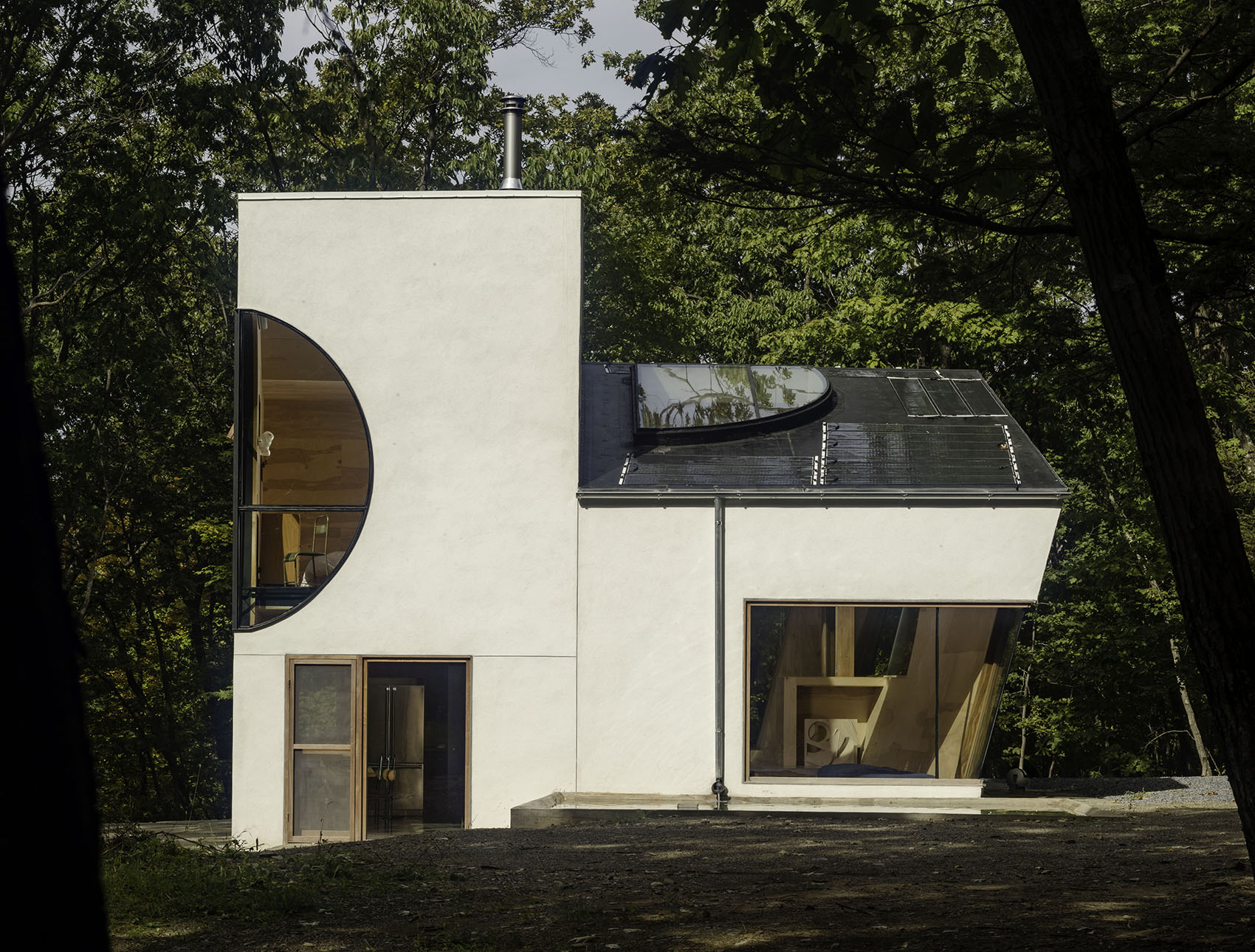
▼入口立面,entrance facade© Paul Warchol
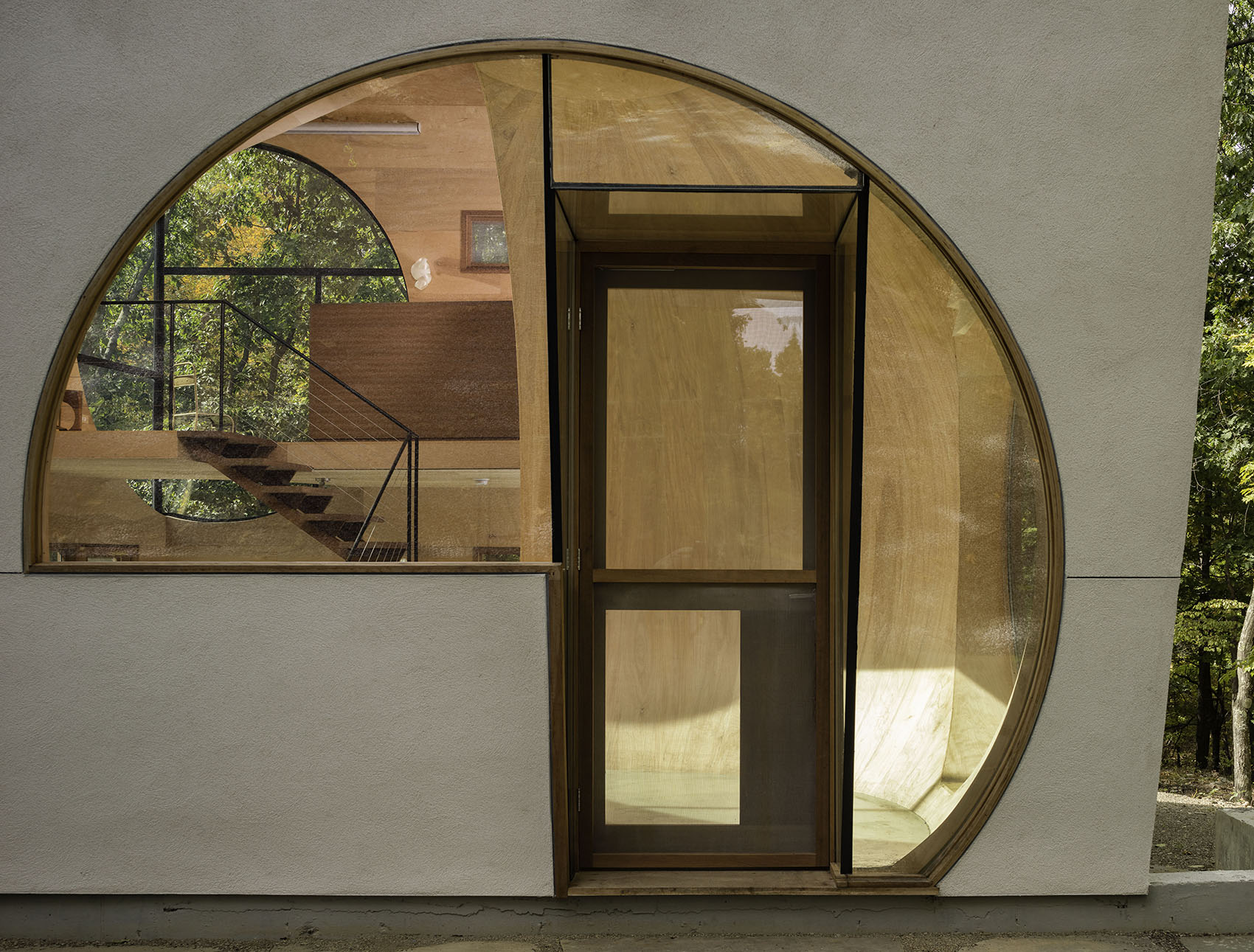
球形空间与不规则超立方体相交形成住宅的几何结构,构成内部空间的催化剂。入口门廊处是球形交叉空间,虚空的木制球体迎接着访客。垂直动态空间交叠改变了内部空间,使住宅剖面产生变化。核心空间设有厨房,其他空间环绕此处通向二层,创造了可供选择的使用模式。住宅虽然没有卧室,但可以睡下五个人。
The house’s geometry is formed from spherical spaces intersecting with tesseract trapezoids intended as a catalyst of volumetric inner space. The geometry of the spherical intersections begins to be felt at the entry porch; an orb of wood carved out of the house volume welcomes the entrant.The shift in section of the house alters internal space with vertical dynamic spatial overlap. Situated around one main volume, open to the second level, with the kitchen placed in the center, alternative use patterns are created. There are zero bedrooms, yet the house can sleep five.
▼入口门廊,the entry porch© Paul Warchol
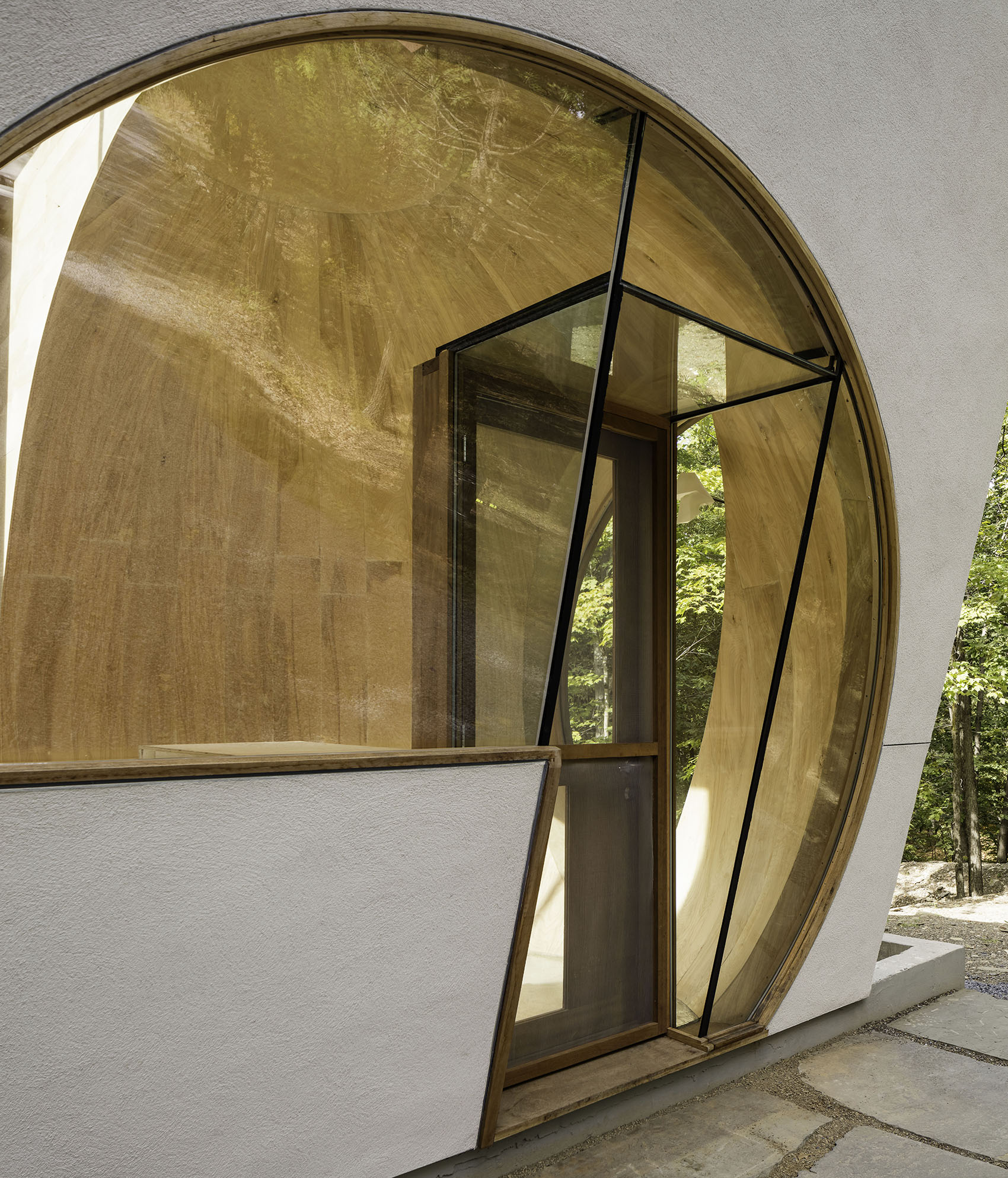
▼球形交叉空间,thespherical intersections© Paul Warchol

▼楼梯环绕核心空间,the stairs surround center space© Paul Warchol
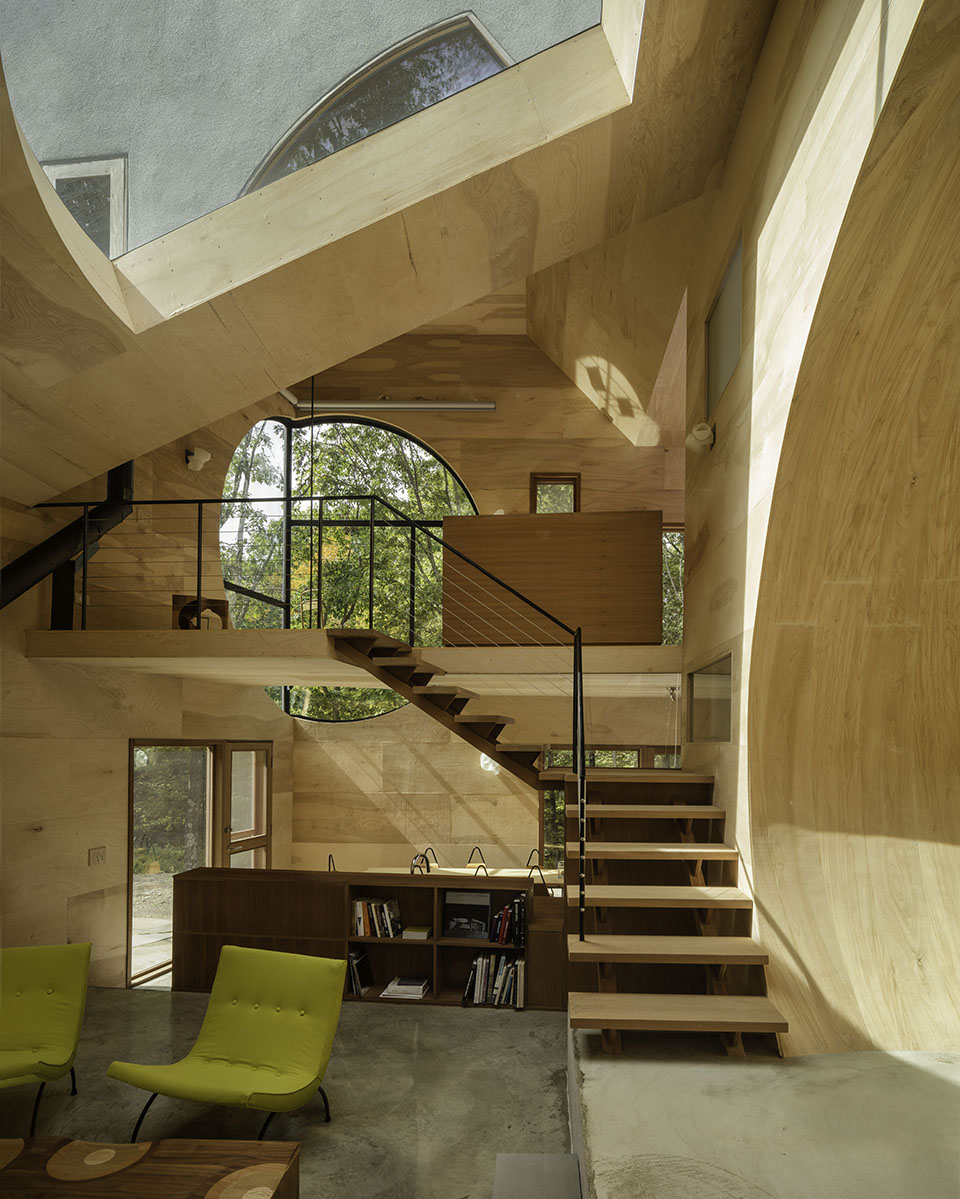
▼俯瞰门廊,overlooking the porch© Paul Warchol
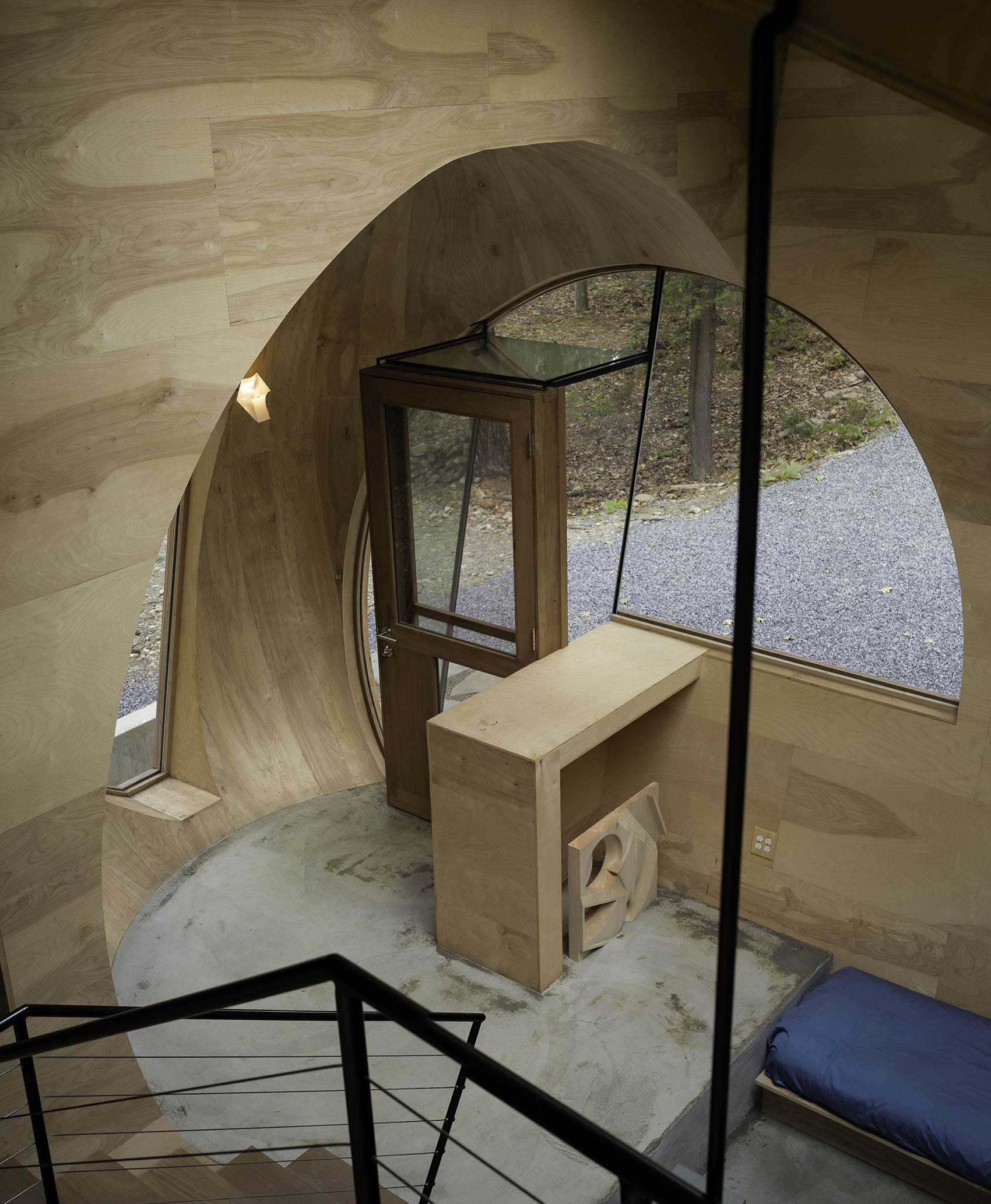
▼从二层平台望向交错的几何形体,view tothe staggered geometric volume from the first floor platform© Paul Warchol

▼房间通过圆形窗户与森林相连,the room is connected to the forest through a round window© Paul Warchol

该住宅用地热供暖代替化石燃料,用太阳能供电代替电网供电。SoloPowe薄膜光伏电池连接至Sonnen电池储能系统,使住宅实现能源独立。所有灯具均为PLA玉米淀粉生物塑料3D打印。玻璃和木材均来自当地。该住宅几乎完全由建筑商用原材料建造,包括实心红木材质的门窗框、一部红木楼梯以及桦木胶合板墙。整个房间没有使用石膏板,球形交叉空间也是用弯曲的薄木层制作的。所有天然油木和胶合板室内饰面属于这个侘寂之地的物质性和经济性的一部分。
Instead of fossil fuel, the house is heated geothermally. Instead of grid power, the house has electricity from the sun. Thin film SoloPower photovoltaic cells are connected to a Sonnen battery energy storage system, allowing the house to be energy independent. All light fixtures are 3D printed in PLA cornstarch-based bioplastic. Glass and wood are locally sourced.The house was made almost entirely from raw materials by the builders, crafting solid mahogany window and door frames, a mahogany stair and birch plywood walls. There is no use of sheetrock. The spherical intersection space was also crafted in curved, thin wood layers. All natural oiled wood and plywood interior finishes are part of the arte povera materiality and economy of this place of wabi-sabi.
▼从室外望向室内,建筑与景观融为一体,looking from the outside to the inside, the architecture blends into the landscape© Paul Warchol
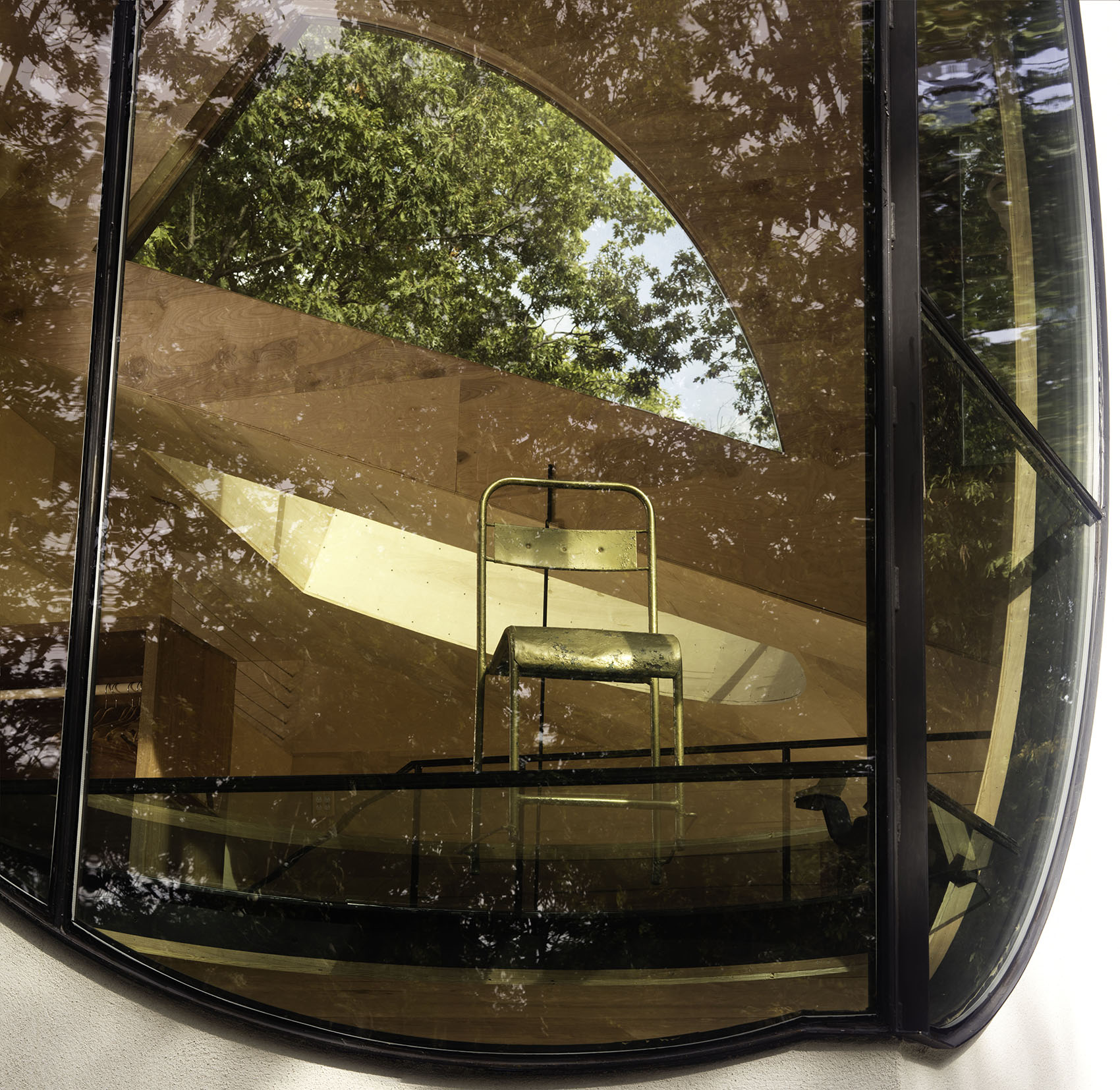
发表评论 取消回复